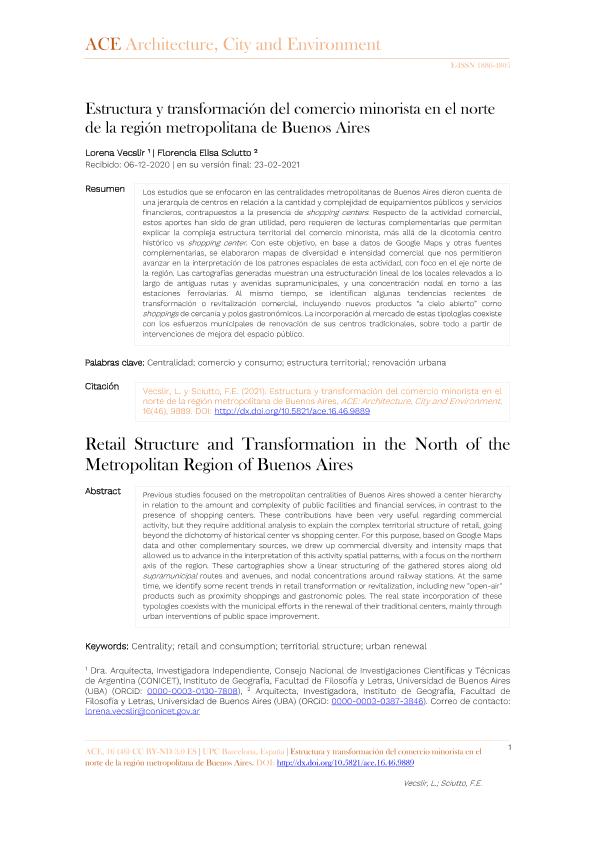Artículo
Los estudios que se enfocaron en las centralidades metropolitanas de Buenos Aires dieron cuenta de una jerarquía de centros en relación a la cantidad y complejidad de equipamientos públicos y servicios financieros, contrapuestos a la presencia de shopping centers. Respecto de la actividad comercial, estos aportes han sido de gran utilidad, pero requieren de lecturas complementarias que permitan explicar la compleja estructura territorial del comercio minorista, más allá de la dicotomía centro histórico vs shopping center. Con este objetivo, en base a datos de Google Maps y otras fuentes complementarias, se elaboraron mapas de diversidad e intensidad comercial que nos permitieron avanzar en la interpretación de los patrones espaciales de esta actividad, con foco en el eje norte de la región. Las cartografías generadas muestran una estructuración lineal de los locales relevados a lo largo de antiguas rutas y avenidas supramunicipales, y una concentración nodal en torno a las estaciones ferroviarias. Al mismo tiempo, se identifican algunas tendencias recientes de transformación o revitalización comercial, incluyendo nuevos productos “a cielo abierto” como shoppings de cercanía y polos gastronómicos. La incorporación al mercado de estas tipologías coexiste con los esfuerzos municipales de renovación de sus centros tradicionales, sobre todo a partir de intervenciones de mejora del espacio público. Previous studies focused on the metropolitan centralities of Buenos Aires showed a center hierarchy in relation to the amount and complexity of public facilities and financial services, in contrast to the presence of shopping centers. These contributions have been very useful regarding commercial activity, but they require additional analysis to explain the complex territorial structure of retail, going beyond the dichotomy of historical center vs shopping center. For this purpose, based on Google Maps data and other complementary sources, we drew up commercial diversity and intensity maps that allowed us to advance in the interpretation of this activity spatial patterns, with a focus on the northern axis of the region. These cartographies show a linear structuring of the gathered stores along old supramunicipal routes and avenues, and nodal concentrations around railway stations. At the same time, we identify some recent trends in retail transformation or revitalization, including new "open-air" products such as proximity shoppings and gastronomic poles. The real state incorporation of these typologies coexists with the municipal efforts in the renewal of their traditional centers, mainly through urban interventions of public space improvement.
Estructura y transformación del comercio minorista en el norte de la región metropolitana de Buenos Aires
Título:
Retail Structure and Transformation in the North of the Metropolitan Region of Buenos Aires
Fecha de publicación:
06/2021
Editorial:
Universitat Politecnica de Catalunya
Revista:
Architecture, City and Environment
e-ISSN:
1886-4805
Idioma:
Español
Tipo de recurso:
Artículo publicado
Clasificación temática:
Resumen
Palabras clave:
CENTRALIDAD
,
COMERCIO Y CONSUMO
,
ESTRUCTURA TERRITORIAL
,
RENOVACIÓN URBANA
Archivos asociados
Licencia
Identificadores
Colecciones
Articulos(SEDE CENTRAL)
Articulos de SEDE CENTRAL
Articulos de SEDE CENTRAL
Citación
Vecslir, Lorena; Sciutto, Florencia Elisa; Estructura y transformación del comercio minorista en el norte de la región metropolitana de Buenos Aires; Universitat Politecnica de Catalunya; Architecture, City and Environment; 16; 46; 6-2021; 1-20
Compartir
Altmétricas




